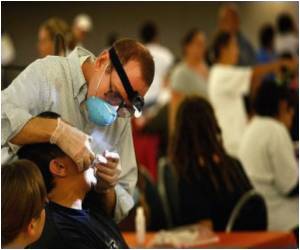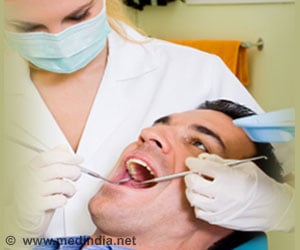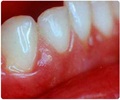The red, swollen and painful gums and bone destruction of periodontal disease could be effectively treated by beckoning the right kind of immune system cells to the inflamed tissues.

Periodontal disease currently is treated by keeping oral bacteria in check with daily brushing and flossing as well as regular professional deep cleaning with scaling and root planing, which remove tartar above and below the gum line. In some hard-to-treat cases, antibiotics are given. These strategies of mechanical tartar removal and antimicrobial delivery aim to reduce the amount of oral bacteria on the tooth surface, explained co-author and co-investigator Charles Sfeir, D.D.S., Ph.D., director, Center for Craniofacial Regeneration and associate professor, Departments of Periodontics and Oral Biology, Pitt's School of Dental Medicine. "Currently, we try to control the build-up of bacteria so it doesn't trigger severe inflammation, which could eventually damage the bone and tissue that hold the teeth in place," Dr. Sfeir said.
"But that strategy doesn't address the real cause of the problem, which is an overreaction of the immune system that causes a needlessly aggressive response to the presence of oral bacteria. There is a real need to design new approaches to treat periodontal disease. "In the healthy mouth, a balance exists between bacteria and the immune system response to forestall infection without generating inflammation, said senior author Steven Little, Ph.D., associate professor and chair of the Department of Chemical and Petroleum Engineering, Pitt's Swanson School of Engineering. But in many people, a chronic overload of bacteria sets up the immune system to stay on red alert, causing harm to the oral tissues while it attempts to eradicate germs.
"There is a lot of evidence now that shows these diseased tissues are deficient in a subset of immune cells called regulatory T-cells, which tells attacking immune cells to stand down, stopping the inflammatory response," Dr. Little said. "We wanted to see what would happen if we brought these regulatory T-cells back to the gums."
To do so, the researchers developed a system of polymer microspheres to slowly release a chemokine, or signaling protein, called CCL22 that attracts regulatory T-cells, and placed tiny amounts of the paste-like agent between the gums and teeth of animals with periodontal disease. The team found that even though the amount of bacteria was unchanged, the treatment led to improvements of standard measures of periodontal disease, including decreased pocket depth and gum bleeding, reflecting a reduction in inflammation as a result of increased numbers of regulatory T-cells. MicroCT-scanning showed lower rates of bone loss. "Mummified remains from ancient Egypt show evidence of teeth scraping to remove plaque," Dr. Little noted.
"The tools are better and people are better trained now, but we've been doing much the same thing for hundreds of years. Now, this homing beacon for Treg cells, combined with professional cleaning, could give us a new way of preventing the serious consequences of periodontal disease by correcting the immune imbalance that underlies the condition. "Next steps include developing the immune modulation strategy for human trials. In addition to Drs. Sfeir and Little, the research team included Ph.D. candidate Andrew J. Glowacki,, Sayuri Yoshizawa, D.D.S., Ph.D., Siddharth Jhunjhunwala, Ph.D., all of the University of Pittsburgh; and Andreia E Vieira, Ph.D., and Gustavo P. Garlet, D.D.S., Ph.D., of Sao Paulo University, Brazil.
Advertisement













